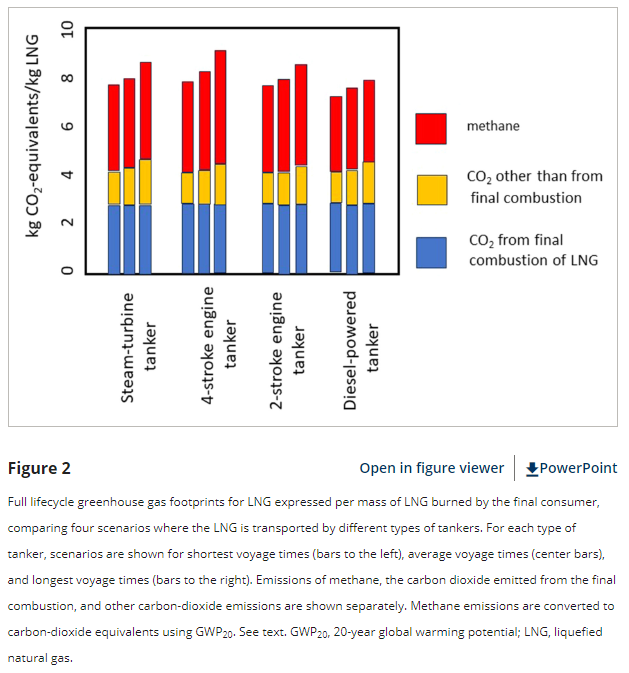You won’t hear it from the gas cartel-sponsored Grattan Institute but there is a mounting body of evidence that LNG fugitive emissions are calamitous for climate change.
Liquefied natural gas (LNG) exports from the United States have risen dramatically since the LNG-export ban was lifted in 2016, and the United States is now the world’s largest exporter.
This LNG is produced largely from shale gas.
Production of shale gas, as well as liquefaction to make LNG and LNG transport by tanker, is energy-intensive, which contributes significantly to the LNG greenhouse gas footprint.
The production and transport of shale gas emits a substantial amount of methane as well, and liquefaction and tanker transport of LNG can further increase methane emissions.
Consequently, carbon dioxide (CO2) from end-use combustion of LNG contributes only 34% of the total LNG greenhouse gas footprint, when CO2 and methane are compared over 20 years global warming potential (GWP20) following emission.
Upstream and midstream methane emissions are the largest contributors to the LNG footprint (38% of total LNG emissions, based on GWP20).
Adding CO2 emissions from the energy used to produce LNG, total upstream and midstream emissions make up on average 47% of the total greenhouse gas footprint of LNG.
Other significant emissions are the liquefaction process (8.8% of the total, on average, using GWP20) and tanker transport (5.5% of the total, on average, using GWP20).
Emissions from tankers vary from 3.9% to 8.1% depending upon the type of tanker.
Surprisingly, the most modern tankers propelled by two- and four-stroke engines have higher total greenhouse gas emissions than steam-powered tankers, despite their greater fuel efficiency and lower CO2 emissions, due to methane slippage in their exhaust.
Overall, the greenhouse gas footprint for LNG as a fuel source is 33% greater than that for coal when analyzed using GWP20 (160 g CO2-equivalent/MJ vs. 120 g CO2-equivalent/MJ).
Even considered on the time frame of 100 years after emission (GWP100), which severely understates the climatic damage of methane, the LNG footprint equals or exceeds that of coal.

Meanwhile, the disgraceful Grattan Institute is busy making arguments to households off gas even though that is better than coal while ignoring all of these catastrophic fugitive emissions in the gas export cartel:

Australian brains have been reduced to corporate-sponsored mush.

